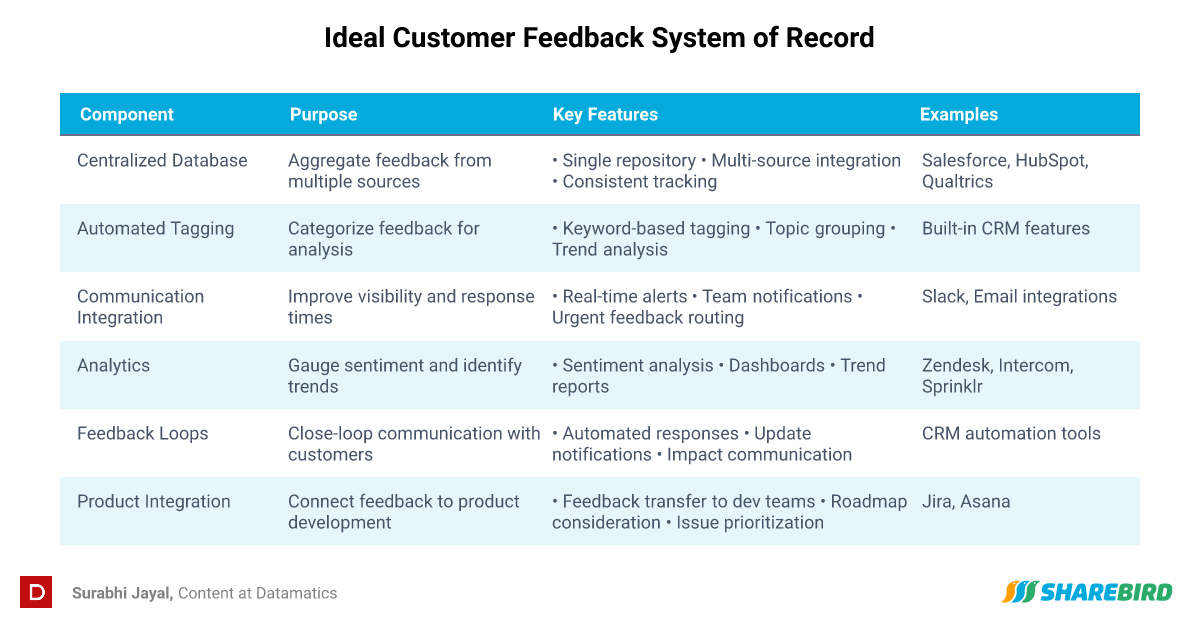What’s your system of record for customer feedback?

For tracking and managing customer feedback, a solid system of record typically includes a centralized platform where feedback from all sources is collected, categorized, and analyzed. Here’s how I would set up an ideal system of record for customer feedback:
Centralized Feedback Database (CRM or Customer Feedback Tool): A Customer Relationship Management (CRM) tool like Salesforce or HubSpot, or a dedicated customer feedback tool like Qualtrics, Medallia, or Zendesk. These platforms aggregate feedback from multiple sources, including surveys, support tickets, reviews, and social media, into a single repository. It’s essential to have everything in one place for consistent tracking.
Automated Tagging and Categorization: Feedback should be categorized by topics like product features, UX issues, or support experience. Many tools can automate tagging based on keywords, which helps quickly group feedback for trend analysis.
Integration with Communication Tools (Slack, Email, etc.): Integrating feedback tools with team communication channels can improve visibility and response times. For example, urgent feedback can trigger alerts or Slack notifications, ensuring that specific feedback reaches the right people fast.
Sentiment Analysis and Analytics: Leveraging tools with built-in sentiment analysis (e.g., in Zendesk, Intercom, or Sprinklr) helps gauge overall customer sentiment and prioritize issues. Regular analytics and dashboards are key for trend analysis, identifying recurring themes, and seeing changes over time.
Feedback Loops for Closed-Loop Communication: A solid system includes processes to let customers know their feedback has been received and is being acted on, often through CRM automation or emails that acknowledge and update customers on their feedback’s impact.
Integration with Product Roadmap: Connecting the feedback system to a product management tool (like Jira or Asana) allows for the seamless transfer of product-related feedback directly to development or product teams for consideration in the roadmap.
Regular Review and Reporting: Setting up regular feedback review sessions (weekly or monthly) where cross-functional teams review feedback reports and adjust priorities as needed.
For smaller operations, this setup could start with simpler tools like Google Sheets or Airtable combined with surveys (e.g., via Typeform or Google Forms) to consolidate feedback and then scale up to specialized platforms as needed. The key is consistency, organization, and the ability to track feedback back to actions taken.
